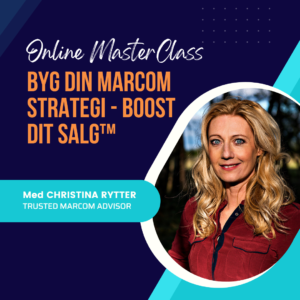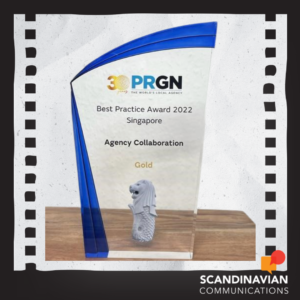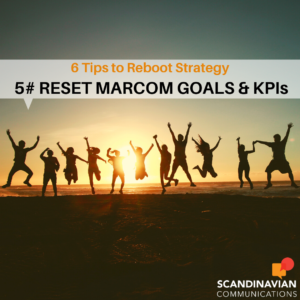Ready to reach the stars in 2023? If so, working strategically with Marketing and Communications is a pivotal first step in the right direction. Here you’ll get our recommendations for a 5-Start MarCom Strategy 2023

⭐ Business goals as guiding star
Communications, PR and Marketing are all about supporting your overall business goals. Therefore all activities must drive the business forward according to the overall company business goals. MarCom Strategy is a naturally integrated part of the business strategy of today’s leading companies. Your overall MarCom strategy must link together with a Go-to-Market plan for tactic execution of your campaigns and activities within communications, PR, marketing and social media.
⭐ Key Messages in order
It is absolutely key to have your Key Messages in order. Do a solid piece of work with both your Corporate & Product Messages. Our Corporate messages must be Value driven, authentic and show WHY your company or organisation are in this world? What lights your inner fire? This is feeling-based messages. All studies show that our actions as humans to a large extent are feeling driven. It’s hardwired biology. Your Product messages must address your target group’s pains, needs and dreams. You need to understand and take your target group’s perspective to create relevant product messages. NOT only your own company perspective! 😉
⭐ Segment Target Groups
A vital part of your MarCom Strategy is to segment your target groups and influencers. Successful Communications, PR and Marketing start with a very clear and deep segmentation. Your target groups are often very different. The more we unfold the target groups and influencers in our strategic work, the clearer it becomes, that we have many more, than we realize off the top of our heads. A typical pitfall is therefore, that companies try to reach all target groups with the same type of communication. If you try to reach everyone – often you reach no one. And the MarCom results become too weak to create a really successful impact on the business.
⭐ Relevant Communication Channels
To reach each of your key target groups, you need to tailor your content and then communicate and get into dialogue in the relevant and strategic/tactical selected communications channels. This is NOT necessarily the channels you know and use yourself! 😉 But the channels preferred by each of your target groups and influencers. Again, this often varies in different target groups across business positions, countries, ages, gender etc. To be successful your business needs to engage and communicate in the channels where your target groups are.
⭐ Measure Results
You need to strategically decide on and set KPIs (Key Performance Indicators) for your communications, PR and marketing. Otherwise you can only to a lesser extent measure the effect, business value and ROI (Return-on-Investment) of your invested MarCom budget.
When you set KPIs and thereby measure results, you’ll be able to have clear evaluation of, what is driving the business forward. And what is not. Also, you can demonstrate the direct business value of communications, PR, marketing and social media to the management and the board.
Learn more:
Please contact our founder Christina Rytter direct at cr@scandcomm.com to learn more about, how we create a tailored MarCom Strategy for your company in Scandinavia – or beyond.
Online MasterClass
OR Do-It-Yourself with Christina Rytter´´´s online MasterClass (in Danish)










